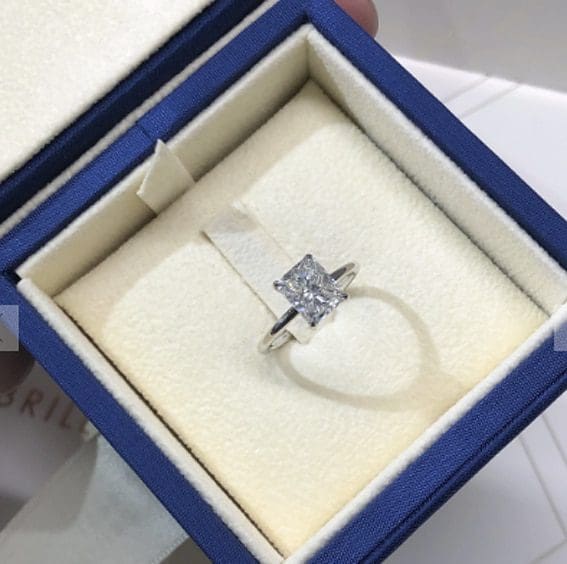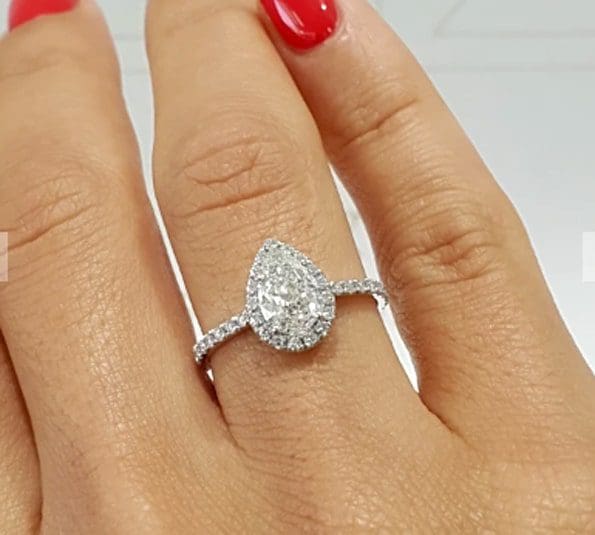words Alexa Wang
The COVID-19 pandemic has affected life as we know it in every imaginable way. The jewelry industry has seen a major decline in diamond mining and sales as people get locked down in their homes and mining operations come to a standstill.
Belgium, the world’s largest mined diamond center, has even suspended its business.
As expected, interest has now turned to lab-grown diamonds as the most viable, ethical, and eco-friendly source of diamond jewelry.
In this post, we look at what are lab-grown diamonds are, how they are made, and why they have become so popular today.
What Are Lab-Grown Diamonds?
Just as their name shows, lab-grown diamonds are diamonds that have been grown by scientists in a laboratory.
They have the same chemical composition as natural mined diamonds. They are optically identical to natural diamonds and look as brilliant and attractive as any diamond sourced from an underground mine.
The major difference between lab-grown and natural diamonds is the process through which each is made and of course the rarity of natural diamonds.
How Are Diamonds Grown in a Lab?
There are several methods of creating diamonds in a lab but the process usually starts with a small seed lab diamond which is placed in a chamber known as a plasma reactor or a large mechanical press then using technology and a combination of a carbon source, heat, and pressure to make the crystal grow one layer at a time. There are basically two ways of creating lab-grown diamonds, namely the CVD and HPHT methods.
CVD is short for Chemical Vapor Disposition. In the CVD process, the tiny diamond seed is placed in a CVD reactor. A mix of gases rich in carbon is added to the mixture at extremely low pressure before introducing microwaves to the gases to create a plasma.
As the temperature is increased in the reactor to over a thousand degrees the gas molecules split and carbon atoms bind to the tiny diamond seed allowing the seed to grow one layer at a time. The process creates a high-quality diamond similar to a natural diamond.
HPHT is short for High Temperature High Pressure. The HPHT method creates the same conditions as those under which diamonds naturally form using large mechanical presses and the application of extreme pressure and temperature.
The process uses carbon and a diamond seed which acts as a template for carbon lattice to grow one layer at a time over a few days. Best Brilliance lab-grown diamonds are grown using ethical, energy-efficient, and environmentally friendly methods.

Alt txt – The Harper Lab Grown Ring
Why Lab-Grown Diamonds Are Better Than Natural Diamonds
Companies dealing in lab-grown diamonds produce high-quality diamonds with the same chemical, physical, and optical characteristics as natural diamonds sourced from mines.
For instance, Best Brilliance lab-grown diamonds have the same sparkle, scintillation, and fiery glow as natural diamonds. In fact, you can only differentiate Best Brilliance lab-grown diamonds from natural diamonds through tests using specialized equipment.
Here are some of the key reasons why it’s time people started focusing on lab-grown diamonds more than natural diamonds:
- Ethical Production Practices
If you want to completely avoid conflict or blood diamonds, buy lab-grown diamonds.
These are diamonds produced through ethical practices that don’t involve the abuse of human rights as many mined diamonds are notorious for.
- Environmentally Friendly Mining Free Production
Lab-grown diamonds don’t involve any form of mining and destruction of the environment. The diamond mining process has a significant impact on the natural environment.
It’s even estimated that 250 tons of Earth have to be moved to harvest a single carat of natural diamond. Lab-grown diamonds are significantly less harmful to the environment.

Alt txt: The Sophia Lab Grown Ring
- The Less Expensive Option
Lab-grown diamonds are comparatively less expensive but provide the same value as mined diamonds.
This is because the process of mining and processing natural diamonds is often quite expensive and the costs are normally transferred to the consumer.
Lab-grown diamonds have a comparatively less expensive production process and, therefore, available at a more affordable cost.
Conclusion
It’s no surprise why Lab-grown diamonds have become quite popular today despite the reduced production of natural diamonds due to the COVID-19 pandemic.
Lab-grown diamonds are not only more affordable but have the same physical, chemical, and optical appeal as natural diamonds. They cost up to 30% less than natural diamonds of the same size and quality.
When you consider the work, environmental degradation, human rights abuse, and other unethical practices involved in mining natural diamonds, you’ll agree that the world is a better place with lab-grown diamonds.
If you’re looking for a diverse range of lab-grown diamonds, Best brilliance has an entire section dedicated to different types, sizes, and styles of lab-grown diamonds.








